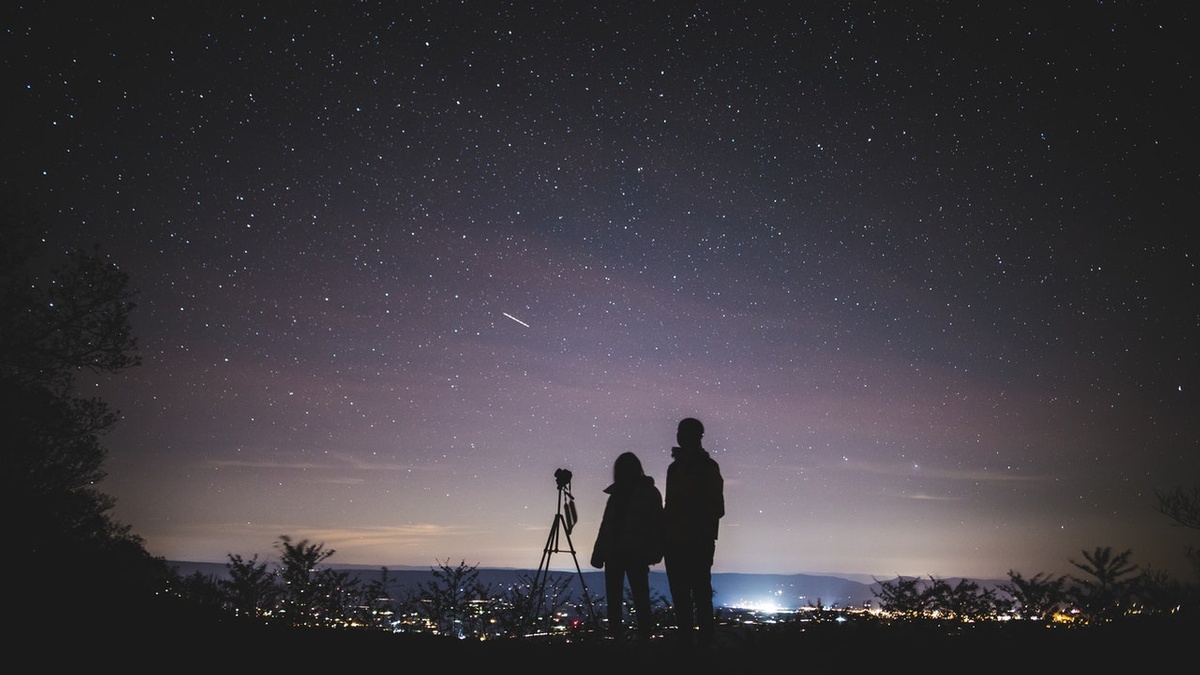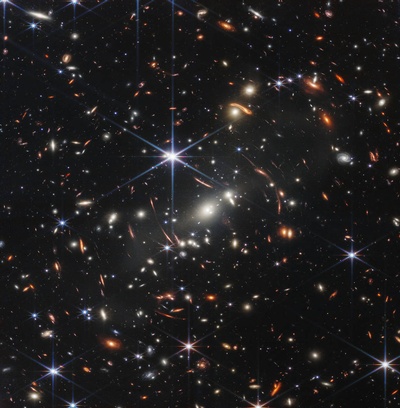
Interested in time travel? The superpowered James Webb Telescope has released its first images this month, giving us a window into distant space and the distant past. It’s dazzling.
The Carina Nebula, a birthing ground for stars, appears as a mountainous orange wave flowing upward in a deep blue twinkling field. Stephan’s Quintet, best known for playing angels in the night sky of the film It’s a Wonderful Life, is displayed in striking detail, each galaxy swirling with bursts of red and gold like a fire dancer’s flame. The Southern Ring Nebula reveals the dust floating on the periphery of a dying star, while Webb’s First Deep Field allows us to view some of the earliest galaxies to exist in our universe. Because of the distance the light has had to travel to reach us, the picture we see now reveals what this universe looked like 4.6 billion years ago. Some of the galaxies pictured formed soon after the Big Bang and are over 13 billion years old.
The news of an unmanned space exploration may tend to get lost in the headlines these days. Take this opportunity to pull back from the microcosm of the present moment and look with wonder at the marvelous universe we were all born from. As host of the original Cosmos Carl Sagan famously explained, "We are a way for the universe to know itself. Some part of our being knows this is where we came from. We long to return. And we can, because the cosmos is also within us. We're made of star stuff.”
Celebrate our Expanding Universe
Talk to the young folks in your life about the James Webb telescope images and what we’re learning about the beginning of the universe! Don’t know where to start? Try the Space for Kids book list, or explore our out-of-this-world book list for teens.
Watch the reboot of Cosmos: A Spacetime Odyssey featuring famed astrophysicist Neil deGrasse Tyson. Afterwards, try these fun, space-themed activities for kids from the Franklin Institute.
Read this comic about NASA engineer Nagin Cox’ experience of living on Mars time, where a day is called a “sol.” Then learn more about the Mars mission with games, videos, craft projects, and more from NASA’s 2020 Countdown to Mars.
Spend some time stargazing after dark, wherever you are. Cities experience light pollution, but on a clear night, you can still catch the moon, a planet or two, and the stars of a few highly visible constellations right here in Philly! Learn more about the night sky in your neighborhood at Time and Date.
Stay tuned for our spacetastic online NASA-themed Adventure, coming this autumn as part of the Year-Round Reading Challenge! In the meantime, help us celebrate the Summer of Wonder by logging your intergalactic reading online. We’ve already met our goal of 100,000 community reading minutes, and now we’re aiming to double that by August 31st!
Have a question for Free Library staff? Please submit it to our Ask a Librarian page and receive a response within two business days.

